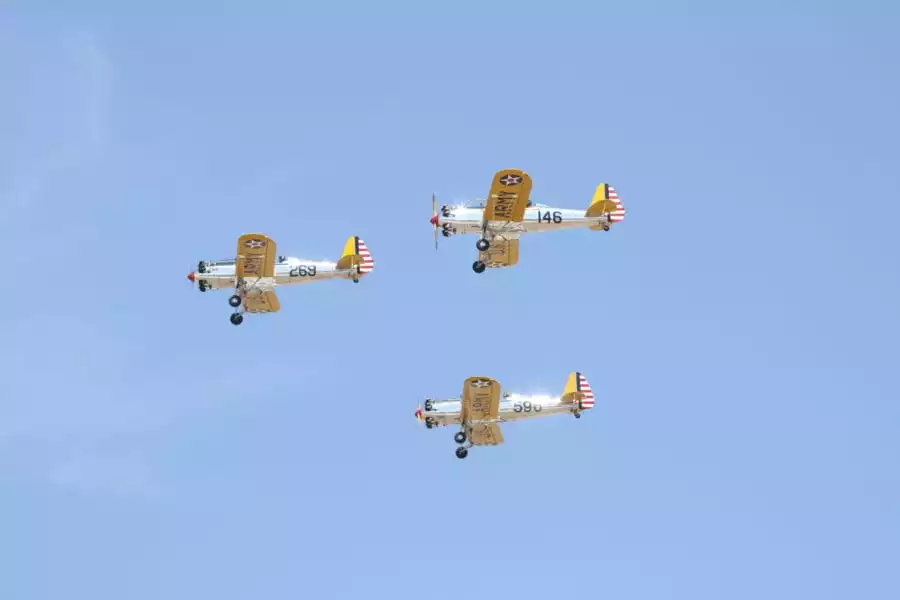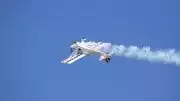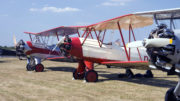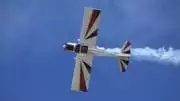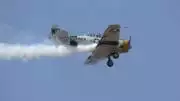Airplane aerodynamics are an important factor in determining the capabilities of the aircraft, and this is true for airshow performers. So, why does aerodynamics matter?
Traditional lightweight aerobatic airplanes look completely different from the jet-powered military teams that perform at airshows, but they all bring a different appreciation for aerodynamics from the audience. From the perspective of performers and pilots, why does airplane aerodynamics matter?
For a standard aircraft and airplane journey, the aerodynamic capabilities of the airplane depends on its mission. A World War II bomber which needed to carry heavy weapons over long distances should look quite different from a light sport aircraft meant to slip in and out of short landing fields.
In general, where air show performers are concerned, the airplane must be light and quick, but sturdy enough to bear the aerodynamic forces lifting and pressing down on it. Pilots capable of performing aerobatic maneuvers must practice their skills beyond basic aviating and even precision flying. They must usually learn to take off and land an aircraft with a tail wheel, for example, and effectively control a powerful engine.
Symmetrical Airfoils
Standard aircraft tend to have wings which are cambered. That means they are curved on the top, and flat on the bottom. Airflow studies and generations of aerodynamic engineering shows that this is best for airplanes which are designed for flying “right side up.” Of course, in the early days of aviation, the goal was merely to get a “flying machine” aloft. But soon afterwards, aerobatic pilots were pushing what it meant to be in the air.
If an air show pilot is spending some of his or her performance upside down, it’s important for his or her airplane to have symmetrical wings. These offer the same degree of curve on both the top as well as the bottom of the airfoil, or the cross section shape of the whole wing. This balance allows the airplane to still produce lift even when the cockpit is pointed towards the ground.
While a cambered wing shape is best and most efficient at generating lift, it is not necessary. The symmetrical airfoil will still get the job done while allowing airflow over both sides of the wing. More drag might be present in a symmetrical airfoil, but the need for any lift at all on the underside of the wing renders this acceptable. Therefore, the precision required of aerobatic performers means that symmetrical airfoils are best. These balanced wings slice through the denser low air more evenly than asymmetrical airfoils. This shape also makes trimming, or making counteractive measures against airplane aerodynamics, less of a hassle.
What About Landing Gear?
As soon as an air show audience member realizes the importance of a sleek shape for efficient airflow, he or she might wonder why many of these airplanes might have non-retractable landing gear, or landing gear which cannot stow away in the underbelly of the craft after takeoff. Most airline passengers are used to the reassuring thumping noise the landing gear makes when it extends in preparation for landing. But if speed and precision are so important for air show performers, why is the landing gear left to hang around?
Aerobatic airplanes not only need to offer smooth and efficient flight, but also an acceptable weight to power ratio. Landing gear which retracts is more suitable for long distance flight—slow fuel burn over long distances. Air show airplanes are designed and built with focus on providing strong power quickly and over shorter distances to perform tricks and high performance activities. So while drag is an issue, the ability to get the airplane vertical as quickly as possible is more important. Fixed gear aircraft tend to also have powerful engines which can overcome the extra drag which “hanging landing gear” can produce.
The mechanics necessary for retractable landing gear is also heavy. Air show pilots typically want an aircraft which is as fast and precise as possible. An extremely light airframe, which is also generally not seen on sturdy passenger aircraft, also helps to make up the amount of drag landing gear can produce. In addition, the presence of the landing gear can actually assist the pilot on certain maneuvers when accumulating drag is important.
Aerobatic Tails
On standard aircraft, the point of the tail is to make the aircraft as stable as possible. This means it’s usually a solid vertical stabilizer for training aircraft and passenger jets. For airplane aerodynamics in an air show, the goal for the tail is somewhat different.
Specific tail design enables aerobatic pilots to fly with precision. For example, a basic aerobatic maneuver, a snap roll, is more difficult to perform in aircraft with certain tail configurations. Aircraft tails shaped like a V, a T, or an H aren’t conducive to many other basic maneuvers. Therefore, the tail of aerobatic airplanes tends to have a conventional tab shape.
While stability is still important, many aerobatic airplanes are “taildraggers,” meaning that a small wheel is located at the back of the aircraft. Flying a taildragger requires a special logbook endorsement from a Federal Aviation Administration (FAA) flight instructor because landing them can be difficult. Landing a taildragger is more difficult than landing a nosewheel airplane because the center of gravity in a tailwheel airplane sits behind the main landing gear.
A tail wheel also tends to sit low, which makes for low drag and allows for an airplane’s propellers to sit high enough to clear grass landing fields. As is the case with fixed landing gear, the small wheel at the back might marginally increase drag, but for the purposes of aerobatics, its presence is worth it. Flying an airplane with a tail wheel can also enable a pilot to land on shorter runways, which might be the case for some air show locations.
Engineers of aerobatic airplane aerodynamics are always trying to conserve weight for precise maneuvering. For aerobatic airplanes, the tailwheel cuts down on the heavier weight of the nosewheel. This allows aeronautical engineers to add equipment that a conventional aircraft might not have, such a gas tank capable of drawing fuel in an attitude or inverted oil systems.
Ready to Soar with Us?

